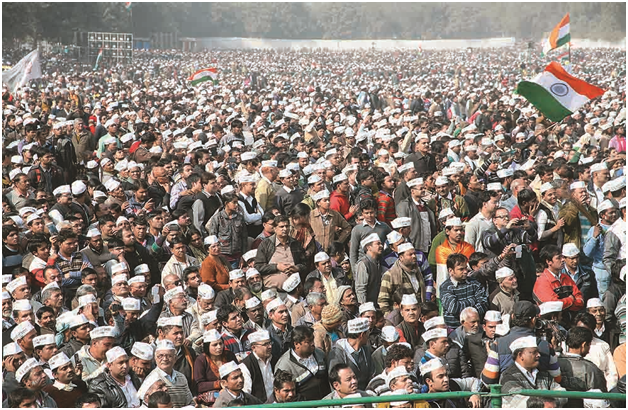Significance of the Spectacular 'Aam Aadmi' Victory
Resurgence of the 'aam aadmi'

When Anna Hazare’s non political anti-corruption movement startled the country in 2011, the then UPA government tried to ridicule it. They also tried to suppress it through police force. Congress politicians like Digvijay Singh trained guns on Anna Hazare calling him an RSS sympathizer. This was with an eye to garnering minority votes during the Uttar Pradesh State elections. BJP leaders, while pretending to sympathize with Anna, tried to sabotage it since they were anxious that such non political movements would endanger their political future. RJD leader Lalu Prasad Yadav described the movement for codification of anti-corruption law as a noose around politicians’ necks. Even Nobel Laureate Amartya Sen called it as “anti-democracy”. Several bureaucrats joined the ranks of politicians in branding the movement as “the march of the uneducated”. Politicians were happy that Anna had to give up his protest fast due to poor health and lack of adequate public response on account of the unusual cold weather.
Early in 2012 I had tried to counter their arguments through my column “You can’t kill Anna spirit by savage criticism”. Anna Hazare phenomenon was an expression of protest of the non-political middle class who could not afford to contest elections as demanded by politicians and compete with political parties who divide voters through money and muscle power, reservations and quotas. I tried to quote the illuminating lecture by Dr. Ayesha Siddiqa on December 18, 2011 in Karachi that it was the absence of an effective “middle class” which had weakened the democratic growth in Pakistan and that we should not replicate that situation in India by killing a middle class and a non-political movement by savage criticism of Anna Hazare’s “Gandhian” protests.
Years rolled on and Anna movement splintered due to organized resistance by the entrenched political and bureaucratic system in our country. Some like Arvind Kejriwal started the Aam Aadmi party (AAP) since they were convinced that a non political movement had no future in India and such a middle class movement could not be sustained without assuming power. Meanwhile governance by the UPA reached its nadir resulting in their decimation in the 2014 General Elections. People voted for Narendra Modi government since there was no visible alternative. But Modi government too followed the same anti-middle class mindset even as they proclaimed that they were working for the poor.
The highly discerning public of Delhi who voted for the BJP as a viable alternative soon found that not a single measure was taken by the Modi government to ameliorate their miserable daily lives despite the NDA’s high decibel election promises. In India an average voter demands only a few basic things: unmolested travel to workplace, some amount of certainty about their electric power and water supply, basic education facilities, reasonably clean toilet facilities and above all a certain amount of security provided by the police who, they expect, would be less authoritarian. Instead what they experienced was more bureaucracy, less transparency, more religious strife which endangered daily law and order, high drama by witnessing glittering inaugurations, orchestrated cleanliness drives which meant nothing more than photo opportunities and frequent visits by foreign VIPs which inconvenienced their daily lives. Delhi was “locked down” for President Obama’s visit for several days including for the rehearsal of Republic Day parade. For foreign VIPs this was a pleasure holiday while for the common man it was further difficulties in their daily trudging to the places of work, school or markets.
The spectacular victory of Arvind Kejriwal and his Aam Admi Party is thus an expression of this common man’s frustration and a signal to the NDA government that they would not be satisfied with drama, slogans and promises. It is not yet certain whether this middle class movement will be sustained for the next 5 years or whether they will lose steam like the youthful European “Greens” who had burst dramatically into the European politics in the 1980s as a “Third Force” but had lost steam by 2013 in Germany and France.



